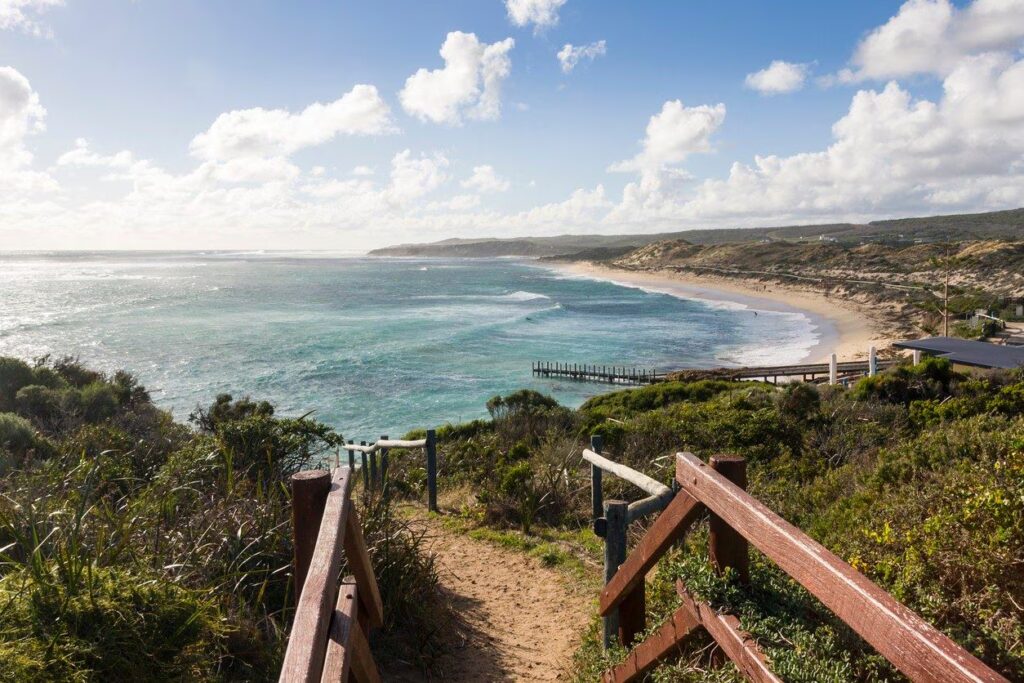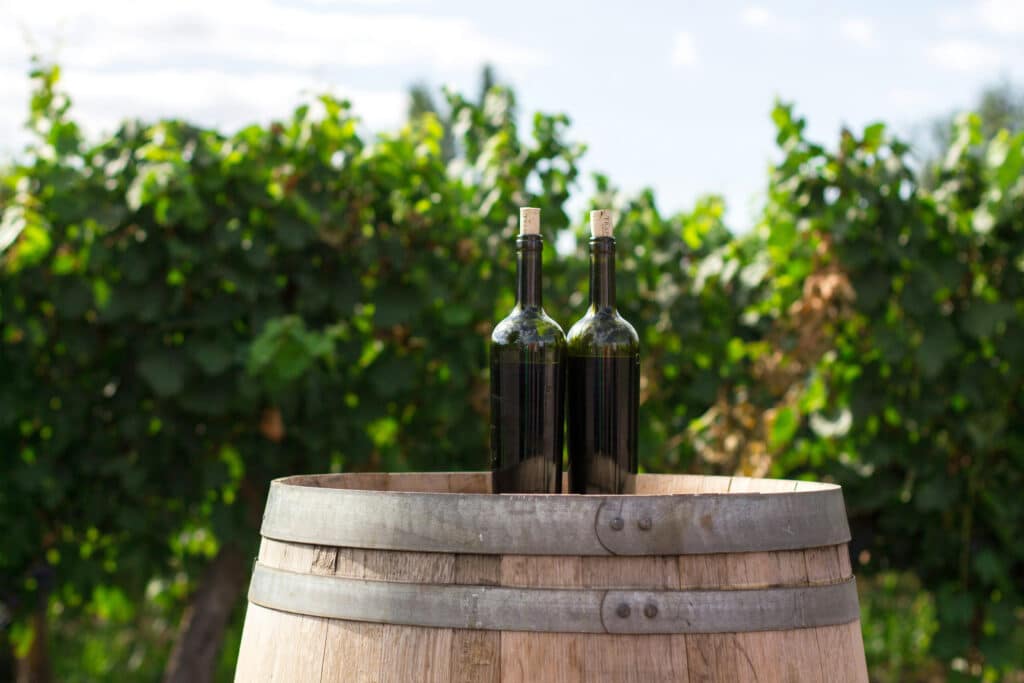Margaret River, nestled in Western Australia’s southwest, is renowned for its stunning landscapes, world-class wineries, and rich cultural heritage. Beyond its picturesque vineyards and surf breaks, this region boasts a tapestry of intriguing stories and natural wonders.
For the curious, here are 10 fascinating facts about Margaret River that reveal what makes this corner of Australia so special.
At Premier Windows, we help Margaret River homeowners enjoy their surroundings with energy-efficient, secure, and stylish windows designed for the AU climate. Get in touch today for more info.

10 Fascinating Facts About Margaret River
1. Margaret River Is of the Most Geographically Remote Wine Regions in the World
Tucked into the far southwest of Western Australia, Margaret River spans a narrow 96-kilometre stretch of land, surrounded on three sides by the Indian Ocean. Its rugged coastline of limestone cliffs, surf breaks, and pristine beaches not only defines its scenery but also contributes to the region’s maritime climate – perfect for premium wine production.
Located around 275 kilometres south of Perth and home to just over 6,000 people, the town’s isolation and natural beauty have made Margaret River internationally recognised as one of the most remote yet remarkable wine regions on the planet
2. Margaret River Produces 20% of Australia’s Wine
Although Margaret River accounts for a mere 3% of Australia’s total wine grape production, it punches well above its weight – producing over 20% of the country’s premium wine output. This reputation for quality stems from its consistent growing conditions: a Mediterranean-style climate, moderated by cooling maritime breezes from both the Indian and Southern Oceans.
The region is particularly renowned for varietals with Bordeaux origins: Sauvignon Blanc, Cabernet Sauvignon, and Semillon dominate plantings and are frequently blended in true Bordeaux style.

3. The Wadandi People Have Cared for Margaret River for Over 60,000 Years
The Margaret River area is part of the traditional lands of the Wadandi people, who have inhabited the region for over 60,000 years. They are considered the traditional owners of the land, collectively known as Wadandi Boodja, meaning Saltwater People’s Country.
Their deep connection to the land is evident in the area’s cultural sites and practices. For instance, the term “bombora,” used to describe offshore surf breaks, originates from Indigenous Australian languages, reflecting the integration of Aboriginal culture into local vernacular.
4. Margaret River Is Home to One of Australia’s Biggest Waves
Just off the coast of Gracetown near Margaret River lies Cowaramup Bombora – better known by big wave surfers as “Cow Bombie.” This formidable offshore break, located around 2 kilometres out to sea, is considered one of the most extreme surf spots in Australia. When rare and powerful swells roll in from the Southern Ocean, the break can produce waves towering over 18 metres (60 feet), making it a contender for the country’s largest recorded surf.
Cow Bombie doesn’t break often, but when it does, it draws elite surfers from around the world. It earned international attention in 2007 when local surfer Damon Eastaugh rode one of its monstrous swells, winning the Big Wave Award for his effort.

5. The Cape to Cape Track Spans 125 Kilometres of Coast
Stretching from Cape Naturaliste to Cape Leeuwin, the Cape to Cape Track offers hikers breathtaking views of the Indian Ocean. The trail meanders between the iconic Cape Naturaliste and Cape Leeuwin lighthouses, traversing 125 km of coastal cliffs, pristine beaches, limestone caves, and towering karri forests. Hikers are treated to panoramic views, with opportunities to witness seasonal wildflower displays and spot native wildlife such as emus, kangaroos, and black cockatoos.
6. Subterranean Limestone Caves Hold 35,000 Years of History
Margaret River’s Leeuwin-Naturaliste Ridge is riddled with over 100 limestone caves, many of which are open to the public. Mammoth Cave, for example, contains fossils dating back over 35,000 years and offers self-guided tours through its vast chambers. These caves provide a glimpse into the region’s geological history and prehistoric life.
Tim Connelly, the first explorer and appointed caretaker of the impressive limestone cave, conducted tours by lamplight until 1904 when electric lighting was installed.

7. Margaret River Hosts One of Australia’s Premier Food and Wine Festivals
Margaret River isn’t just about wine; it’s also a haven for food enthusiasts. Margaret River’s food culture is celebrated through various events and festivals that showcase its gastronomic prowess. The annual Margaret River Gourmet Escape is a highlight, attracting renowned chefs and food enthusiasts from around the globe. This event features a series of culinary experiences, including cooking demonstrations, wine tastings, and gourmet feasts set against the region’s stunning natural backdrop
8. Margaret River Was Named in 1839 – But Its Indigenous Name Is Much Older
The town of Margaret River takes its name from the river that flows through the region, officially named in the late 1830s by early settler John Garrett Bussell. He chose the name to honour his step-second cousin, Margaret Whicher, and by 1839 it appeared on colonial maps.
But long before European settlement, this area was home to the Wadandi people who knew the river as Wooditchup, named after Wooditch, an ancestral spirit who is believed to have carved the river’s path during the Nyitting, or Dreaming. This deep cultural heritage is still honoured today – most notably in 2018 when Bramley National Park was renamed Wooditjup National Park to acknowledge the traditional custodians of the land.

9. Margaret River Flows Just 60km – But Has Shaped the Entire Region
Stretching just 60 kilometres from its source in the Whicher Range to the Indian Ocean, the Margaret River may be small, but its impact is anything but. Flowing through forested valleys, vineyards, and limestone gorges, the river has shaped the geography and ecology of the region over thousands of years.
Its seasonal variations have carved fertile floodplains, nourished native flora and fauna, and sustained generations of people. The point where the river meets the sea, known as River Mouth Beach, is an interesting spot, as the calm river waters meet the wild, surf-worthy waves of the West Australia Coast.
10. Over 6,000 Settlers Helped Build Margaret River Through the Group Settlement Scheme
In the 1920s, Margaret River was transformed by the Group Settlement Scheme – an initiative by the Western Australian government to develop agriculture and resettle British migrants and returning WWI soldiers. More than 6,000 settlers were given plots of uncleared land, tasked with building dairy farms from scratch.
Life was tough. Many had little farming experience and faced hard conditions, but their determination laid the foundation for the region’s agricultural industry and rural identity. Their legacy lives on at the Old Settlement Museum, and through the many descendants who still call Margaret River home today.
Proudly Supporting Homes Across Margaret River
At Premier Windows, we’re proud to help Margeret River homeowners with energy-efficient, secure, and beautifully designed windows. Contact us today to explore how our windows can transform your home today.
Visit Our Margaret River Showroom
Alongside our flagship Balcatta factory, we’ve opened a brand new showroom in Margaret River! Experience the quality of Premier double glazing in person, speak with the experts, and tell us all about your new project.
